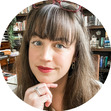Kristen Martin's Blog, page 4
March 15, 2016
How to Outline your Book
I received a question on Twitter recently where I was asked about outlining methods and how I outline my stories. I know I’ve talked about outlining in previous videos on my Youtube Channel, but I haven’t really gone into great detail. Today we’ll talk about outlining and some of the different methods out there and at the end, I’ll tell you exactly what I do to outline my novels.
If you'd rather watch this video, click play below. Otherwise, read on!
First, it’s important to understand the difference between plotters and pantsers. Plotters are those writers who prefer to have in-depth outlines in front of them before they sit down to write. Pansters, on the other hand, prefer not to have anything in front of them except for their laptop and ideas when they sit down to write. But what about those of us in the middle? I’ve deemed a new term for those of you who like to have some idea of what you’re writing, but still want that flexibility and creative room to write whatever comes to mind. I call them PLOTSERS. And I am one of them.
I’ll talk about the plotser method shortly, but let’s start on the right end of the spectrum with the plotters.
THE SNOWFLAKE METHOD This one starts small, with a single overarching idea and invites you to expand the idea from that central point. It definitely falls on the plotter end of the spectrum. Here are the 10 steps of the snowflake method.
Step 1: Write a one-sentence description of the novel. Try to make this sentence less than fifteen words and have it combine the overall larger story with the personal journey of the protagonist.
Step 2: Now expand that sentence to a paragraph of description. Try to do this in five sentences where the first sentence consists of the set-up, the next three describe the main conflicts or “disasters”, and the final sentence wraps up the story.
Step 3: Create a one-page summary sheet for each main character. This sheet should include the character’s major goals, conflict, motivation, and epiphany, and summarizes the story from that character’s POV.
Step 4: Here, we return to the plot and create a brief synopsis. Take the five sentences from Step 2 and expand each one into a paragraph of its own.
Step 5: This step returns to the characters, where you will write about the story from the POV of various characters. This is where each character gets to tell his or her own story. Aim for a page for main characters and half a page for supporting characters.
After completing these five steps, many writers find that it is sufficient preparation. But if you’d like to continue, read on:
Step 6: This step involves expanding your one-page synopsis to four pages.
Step 7: This step allows you to develop expanded character charts and histories.
Step 8: Map out each individual scene of the novel on a spreadsheet using one line per scene. List what point of view the scene will be told from and what happens in the scene. You can even estimate the length of the scene.
Step 9: Expand each scene from the spreadsheet into a paragraph to create a long narrative. This will reveal whether scenes introduce conflict.
Step 10: Write the first draft.
The advantage of having sketched out the novel so thoroughly is that you will unlikely succumb to the dreaded writer's block induced by not knowing where to take the story next.

THE SKELETON METHOD
The skeleton method is one you’ve probably used to write research papers in school. It gives you the opportunity to lay out your core points in a way that will allow your story to flow smoothly. It also gives a good birds-eye view of your structure and can help you re-form your story for maximum impact. The skeleton method looks something like this:
I. Expositiona. Where does the story take place?b. What characters are we introduced to?II. Inciting Incidenta. What is the event or decision that begins the story’s problem?III. Rising Actiona. What actions do your characters take to address or overcome the inciting incident?IV. Climaxa. What is the highest point of tension or drama, the most exciting, intense, or important part of your story?V. Falling Actiona. What comes as a direct result of the climax? Expand on this. For example, if the climax involves the hero winning a car race, the falling action is the victory lap and the all the accolades.VI. Resolutiona. How does the story end?
EXAMPLE:
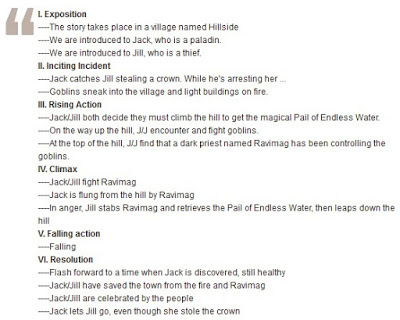
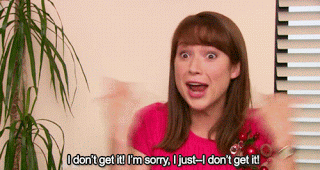
If you're a pantser, you're probably in panic-mode. These outlining methods may seem really intense. So let's move over to the pantser-friendly side of the spectrum with some less complicated methods...
THE FLASHLIGHT METHOD The flashlight method is all about letting yourself discover the story gradually while still doing enough planning that you can anticipate any walls you’re about to crash into. It uses brief chapter summaries to help you outline your story. Each chapter summary is usually only a paragraph or so in length, and gives you a simple guide to go off of. The flashlight method looks something like this:
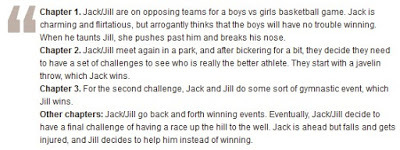

THE VISUALIZER METHOD The visualizer method gives you the freedom to draw in connections and expand on concepts on the fly. Start with blocks for the core plot and character points and then branch off from those as you ask yourself more questions. For example, what was Jack’s motivation? Let's say he was the son of the president. Why did the city need water? Because there was a drought. Why did the city fall? Because there was a lion. Why was there a lion? Because of the drought, maybe? You get the idea. The visualizer method can be seen below, and usually has the main plot (or ending) in the middle with lines branching out to expand upon those ideas:


All of these methods have pros and cons, so it’s important to find out what works best for you. You can take pieces of each method and see what is most helpful for your writing process. My own personal writing process as a plotser goes something like this:
THE PLOTSER METHOD 1. I’ll get an idea and write it down. I’ll then write down a potential beginning, middle, and end, just to get my mind in “plotting” mode. I’ll also think about narration and whether I want to use first, third, or third-person omniscient. (This is similar to step 2 in the snowflake method.)2. I’ll then develop character arcs. I’ll choose names for my characters, write down their motives, physical characteristics, internal struggles, family history, likes and dislikes, etc. (This is similar to step 3 in the snowflake method.)3. Once I have my characters in place, I begin to outline using the visualizer method. I’ll get a large sheet of paper and write down core ideas that will branch off into potential sub-plots.4. I’ll then use my visual map to start the flashlight method. With an idea as to what’s going to happen in the beginning, middle, and end, I’ll divide my ideas up into chapters and decide what should happen in each. (By the end of the plotser method, I will have 4 sentences for each chapter to act as a guide.)5. Lastly, I write. I feel that utilizing multiple methods keeps my thoughts organized while also allowing the creative juices to flow and for the pantser in me to come out. It’s the best of both worlds.
So what are you? A plotter? A panster? Or my newly-created term, plotser? No matter what your writing process may be, it’s critical that you do whatever works for you – and don’t change it just because you watched this video or someone tells you that they've found the "tried-and-true" outlining method. We’re all unique and our minds work in different ways. Trust yourself and trust your creative process. After all, you’re the only one who really knows what works for you and what doesn’t.
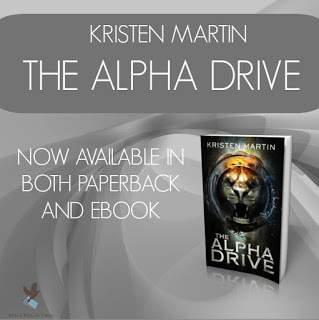
Until next time,

Published on March 15, 2016 13:14
March 9, 2016
The 10 Habits of Highly Successful Writers
Have you ever wondered how people do it? How they commit to writing a book and actually finish their manuscripts, edits and all? It's not easy, but somehow, it gets done. Today we're going to talk about ten habits of highly successful writers. If you'd rather watch this video, you can click play on the video below. If not, keep on reading!
1. Read (A Lot.)
Read in your genre, so you can focus on your subject area, but also read outside your genre so you can broaden your tastes. Writers need to read in order to prevent their style from going stale. The power of reading is probably what inspired you to be a writer in the first place, so stay connected to that feeling by reading.
2. Manage your time wisely
We're all busy, but busy isn't an excuse. So when will you write? Before work or after? On the weekends or during the week? An hour a day? Every day? You need to be specific with yourself, especially when you're first starting out, about the time you'll commit to writing. Log and track your hours if you need to, as if it is a full-time job. Being hard on yourself in the beginning will teach you how many pages you can produce in a given period, and help you understand how to set and meet your goals. One thing is for certain though - do not wait for inspiration! Don't try to "find time" to write - instead, MAKE time. Make it a part of your daily schedule and stick to it.
3. Set goals with deadlines & make a detailed plan to achieve them
Some people prefer weekly goals, others prefer yearly goals. But most likely, your yearly goal will be to write a book by the end of the calendar year. The reason why people with this goal fail is because it is not specific enough and does not have a detailed plan in order to get there. I prefer to set one overarching goal, plus quarterly and monthly goals. This may sound like a lot, but it’s really not because each monthly goal contributes to the larger quarterly goal, which ultimately contributes to the overarching yearly goal of writing a book. For example, last year, my overarching yearly goal was to have the final draft ready for the sequel to The Alpha Drive, which is The Order of Omega. I set word count goals for myself for Q1 and Q2: 35,000 words completed by the end of each quarter. So by June, I had 70,000 words written, which is a pretty great rough draft. Q3 goals included editing and reworking the novel so that it was in a place where it could be read by betas. Q4 goals included recruiting beta readers and incorporating their edits, and then sending the draft to my editor. I’m not going to lie, my Q4 goals have moved into 2016, but I’m still ahead to release this book when I originally intended. But without these specific goals, it would have been impossible to move forward and be where I’m at today.
4. Find your happy place
You need to determine what kind of writing space you require in order to be productive. Some people can work in busy and noisy places, like in a café or waiting for the subway. Other prefer locking themselves away in a quiet location where no one can reach them and nothing can distract them. Find what works for you and only write in the space so that you can be the most productive writer possible.
5. Finish your work
Don’t write your first chapter and then stop to edit because most likely, what will happen is you’ll keep editing and reworking that chapter to make it perfect and completely lose your “flow”. Like I’ve mentioned in previous videos, writing and editing are two very different things and use different sides of the brain. When you’re writing, keep the writer hat on, and let the right side of your brain run with its creativity. Once you’ve written the ENTIRE first draft, then you can go back and edit. But finish your work first!
6. Develop a thick skin
If there’s one thing you need to learn in life in general, it’s that people can be mean. There will always be haters. No matter how perfect and polished and amazing you think your book is, there will ALWAYS be someone who doesn’t like it. Don’t believe me? I went on Goodreads the other day and looked at the reviews for Harry Potter. And guess what? There are some people out there who are CRAZY ENOUGH to give it 2 stars. TWO STARS. Now, that’s not the majority, but like I said, there will always be people that hate your writing and your stories and maybe you as a person. And there’s nothing you can do about it except grow some thick skin, maintain your confidence as a writer, and just let the negativity go. As Eleanor Roosevelt once said, “No one can make you feel inferior without your consent.” Remember that.
7. Grow your author team
Besides your family and friends who understand how important writing is to you, you need to have other people in your corner. Beta readers, critique partners, cover designers, editors, your marketing street team. Having people like this in your corner will not only help support your book, they will also help support YOU. One of my beta readers whom I met online ended up turning into a critique partner and amazing writer buddy. You NEED people like that. Trust me. Build your team and your community, and the whole writing, editing, and publishing experience will be more amazing than you ever dreamed.
8. Love your readers
Your readers are the reason you’re in business. Without them, your story wouldn’t be heard. So write for yourself, but also write for them. Honor and appreciate your readers’ investment by doing your very best work. Make sure that your readers’ time feels well-spent, and not like a pointless sacrifice.
9. Communicate
If your readers/fans reach out to you via social media, whether it be YouTube, Twitter, Instagram, Facebook, Tumblr, etc., pay attention to them! Love your readers because THEY are the ones taking time out of their lives to read something that you wrote. They are volunteering their time to do this. So answer their questions, acknowledge their tweets, and respond to their Facebook messages. Many of them want to be a writer someday, just like you, and will want advice on how you got where you are. Be the author you wished you could have talked to when you were first starting out. Readers are a part of your author team, and you need to nurture them.
10. Love what you do
This is an obvious one. Writing is hard. Writing a book is even harder. And promoting a story you wrote to the masses in the hopes that they’ll love it just as much as you do is even harder. So love what you do. Because at the end of the day, if it doesn’t make you happy, it might be time to do something else. Just remember, very few writers really know what they’re doing until they’ve done it. As Joseph Chilton Pearce once said, “To live a creative life, we must lose our fear of being wrong.”
So, there you have it. The ten habits of highly successful writers. Do you have any other tried and true habits as a writer? If so, I'd love to hear from you! Please leave a comment below.
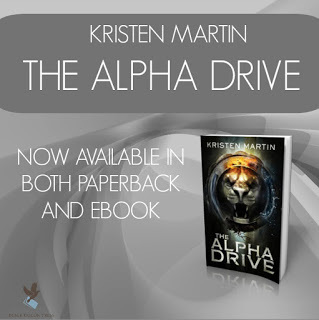
Until next time,

1. Read (A Lot.)
Read in your genre, so you can focus on your subject area, but also read outside your genre so you can broaden your tastes. Writers need to read in order to prevent their style from going stale. The power of reading is probably what inspired you to be a writer in the first place, so stay connected to that feeling by reading.
2. Manage your time wisely
We're all busy, but busy isn't an excuse. So when will you write? Before work or after? On the weekends or during the week? An hour a day? Every day? You need to be specific with yourself, especially when you're first starting out, about the time you'll commit to writing. Log and track your hours if you need to, as if it is a full-time job. Being hard on yourself in the beginning will teach you how many pages you can produce in a given period, and help you understand how to set and meet your goals. One thing is for certain though - do not wait for inspiration! Don't try to "find time" to write - instead, MAKE time. Make it a part of your daily schedule and stick to it.
3. Set goals with deadlines & make a detailed plan to achieve them
Some people prefer weekly goals, others prefer yearly goals. But most likely, your yearly goal will be to write a book by the end of the calendar year. The reason why people with this goal fail is because it is not specific enough and does not have a detailed plan in order to get there. I prefer to set one overarching goal, plus quarterly and monthly goals. This may sound like a lot, but it’s really not because each monthly goal contributes to the larger quarterly goal, which ultimately contributes to the overarching yearly goal of writing a book. For example, last year, my overarching yearly goal was to have the final draft ready for the sequel to The Alpha Drive, which is The Order of Omega. I set word count goals for myself for Q1 and Q2: 35,000 words completed by the end of each quarter. So by June, I had 70,000 words written, which is a pretty great rough draft. Q3 goals included editing and reworking the novel so that it was in a place where it could be read by betas. Q4 goals included recruiting beta readers and incorporating their edits, and then sending the draft to my editor. I’m not going to lie, my Q4 goals have moved into 2016, but I’m still ahead to release this book when I originally intended. But without these specific goals, it would have been impossible to move forward and be where I’m at today.
4. Find your happy place
You need to determine what kind of writing space you require in order to be productive. Some people can work in busy and noisy places, like in a café or waiting for the subway. Other prefer locking themselves away in a quiet location where no one can reach them and nothing can distract them. Find what works for you and only write in the space so that you can be the most productive writer possible.
5. Finish your work
Don’t write your first chapter and then stop to edit because most likely, what will happen is you’ll keep editing and reworking that chapter to make it perfect and completely lose your “flow”. Like I’ve mentioned in previous videos, writing and editing are two very different things and use different sides of the brain. When you’re writing, keep the writer hat on, and let the right side of your brain run with its creativity. Once you’ve written the ENTIRE first draft, then you can go back and edit. But finish your work first!
6. Develop a thick skin
If there’s one thing you need to learn in life in general, it’s that people can be mean. There will always be haters. No matter how perfect and polished and amazing you think your book is, there will ALWAYS be someone who doesn’t like it. Don’t believe me? I went on Goodreads the other day and looked at the reviews for Harry Potter. And guess what? There are some people out there who are CRAZY ENOUGH to give it 2 stars. TWO STARS. Now, that’s not the majority, but like I said, there will always be people that hate your writing and your stories and maybe you as a person. And there’s nothing you can do about it except grow some thick skin, maintain your confidence as a writer, and just let the negativity go. As Eleanor Roosevelt once said, “No one can make you feel inferior without your consent.” Remember that.
7. Grow your author team
Besides your family and friends who understand how important writing is to you, you need to have other people in your corner. Beta readers, critique partners, cover designers, editors, your marketing street team. Having people like this in your corner will not only help support your book, they will also help support YOU. One of my beta readers whom I met online ended up turning into a critique partner and amazing writer buddy. You NEED people like that. Trust me. Build your team and your community, and the whole writing, editing, and publishing experience will be more amazing than you ever dreamed.
8. Love your readers
Your readers are the reason you’re in business. Without them, your story wouldn’t be heard. So write for yourself, but also write for them. Honor and appreciate your readers’ investment by doing your very best work. Make sure that your readers’ time feels well-spent, and not like a pointless sacrifice.
9. Communicate
If your readers/fans reach out to you via social media, whether it be YouTube, Twitter, Instagram, Facebook, Tumblr, etc., pay attention to them! Love your readers because THEY are the ones taking time out of their lives to read something that you wrote. They are volunteering their time to do this. So answer their questions, acknowledge their tweets, and respond to their Facebook messages. Many of them want to be a writer someday, just like you, and will want advice on how you got where you are. Be the author you wished you could have talked to when you were first starting out. Readers are a part of your author team, and you need to nurture them.
10. Love what you do
This is an obvious one. Writing is hard. Writing a book is even harder. And promoting a story you wrote to the masses in the hopes that they’ll love it just as much as you do is even harder. So love what you do. Because at the end of the day, if it doesn’t make you happy, it might be time to do something else. Just remember, very few writers really know what they’re doing until they’ve done it. As Joseph Chilton Pearce once said, “To live a creative life, we must lose our fear of being wrong.”
So, there you have it. The ten habits of highly successful writers. Do you have any other tried and true habits as a writer? If so, I'd love to hear from you! Please leave a comment below.

Until next time,

Published on March 09, 2016 10:32
February 23, 2016
Goodreads Giveaway #4
It's that time again! Goodreads is hosting another giveaway for one autographed copy of my debut novel, THE ALPHA DRIVE. The giveaway will run from Tuesday, February 23rd through Tuesday, March 1st.
Good luck!
.goodreadsGiveawayWidget { color: #555; font-family: georgia, serif; font-weight: normal; text-align: left; font-size: 14px; font-style: normal; background: white; } .goodreadsGiveawayWidget p { margin: 0 0 .5em !important; padding: 0; } .goodreadsGiveawayWidgetEnterLink { display: inline-block; color: #181818; background-color: #F6F6EE; border: 1px solid #9D8A78; border-radius: 3px; font-family: "Helvetica Neue", Helvetica, Arial, sans-serif; font-weight: bold; text-decoration: none; outline: none; font-size: 13px; padding: 8px 12px; } .goodreadsGiveawayWidgetEnterLink:hover { color: #181818; background-color: #F7F2ED; border: 1px solid #AFAFAF; text-decoration: none; }
Goodreads Book Giveaway

The Alpha Drive
by Kristen Martin
Enter Giveaway
Good luck!
.goodreadsGiveawayWidget { color: #555; font-family: georgia, serif; font-weight: normal; text-align: left; font-size: 14px; font-style: normal; background: white; } .goodreadsGiveawayWidget p { margin: 0 0 .5em !important; padding: 0; } .goodreadsGiveawayWidgetEnterLink { display: inline-block; color: #181818; background-color: #F6F6EE; border: 1px solid #9D8A78; border-radius: 3px; font-family: "Helvetica Neue", Helvetica, Arial, sans-serif; font-weight: bold; text-decoration: none; outline: none; font-size: 13px; padding: 8px 12px; } .goodreadsGiveawayWidgetEnterLink:hover { color: #181818; background-color: #F7F2ED; border: 1px solid #AFAFAF; text-decoration: none; }
Goodreads Book Giveaway

The Alpha Drive
by Kristen Martin
Giveaway ends March 01, 2016.
See the giveaway details
at Goodreads.
Enter Giveaway
Published on February 23, 2016 14:47
February 20, 2016
How To Write a Book | Reworking Your Novel To Make It Shine
In the last post, I offered advice when it comes to editing your novel. Today we’re going to talk about the next step in editing, which is reworking. Reworking is the process of looking at the story yet again to make sure you’re not missing an opportunity to make your story truly stunning. If you'd rather watch my video on reworking instead of reading this post, feel free to click play below.
We’ll focus on five things at this stage of editing and rewriting:
1. Beginnings and endings that match After you’ve cut, added, and fixed parts of your MS, review your first page and your last page, or first scene and last scene. Think of your novel as a symphony. The last movements of great symphonies refer back to their opening measures. Reflect on your opening as you rewrite your last page. Reflect on your last scene as you rewrite your first paragraph. For examples of openings and closings that are well matched, read the first and last scenes of the following novels: The Great Gatsby by F. Scott Fitzgerald and Carrie by Stephen King.

2. Varied Locations This is the time to review your settings. List them as if your novel were a play or a movie. If you have too many scenes that take place in the bedroom or in the car, find other places for your characters to have the same conversations – perhaps waiting in a line at an amusement park while it’s raining or passing by an abandoned building. Settings should be striking whenever possible without being so odd that they distract from your story. So, make a list of your settings and if you notice they seem to occur in the same places, it's time to brainstorm more interesting environments.
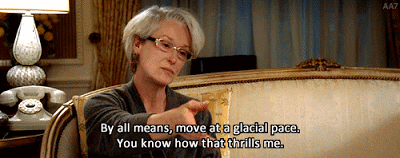
3. Character Arcs Make a list of what each of your main characters is experiencing throughout your story. What emotions is each one going through? Look at these character arcs separately. Each character has his/her own journey through your story. If you find one of your characters is either always hitting the same note (angry in every scene) or flip-flopping too much (let’s say, going from angry to depressed), you may want to make adjustments. Define an overall realistic or desired emotional journey for each individual character and be true to them. This exercise will also let you know if you’ve spent too much time on one character and not enough on another.
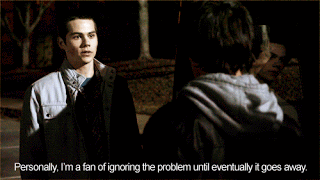
4. Glowing Points Glowing points are those phrases, paragraphs, or scenes in your novel that you admire so much that you can hardly get over yourself. Try to rewrite parts of your novel and lift the rest of your writing to that level of excellence. Easier said than done, but it will give you practice and maybe even a few more glowing points. Don't be like this guy:
5. Finesse Lastly, rewrite for finesse, looking for subtle changes that might make your story more refined. Scan for things that don’t look broken from the outside, but could be enhanced by a fix. For example, a flashback might be better in Chapter 9 instead of Chapter 7. Rather than a dead cat in Chapter 11, it should be a dead dog, because that will remind the protagonist of the family dog she had to put to sleep years ago. In Chapter 5, why not have the lady across the hall fail at dialing 911 – maybe her phone battery is dead – so she has to scream down the fire escape like the antagonist’s mother used to do? Scan for the little things that might make your writing more memorable.
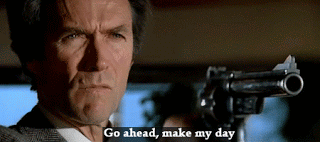
In summary, after you’ve finished editing your novel, it’s time to rework it. When reworking your novel, there will be a lot of rewriting. Focus on making sure your beginning and ending match, that your locations vary in your scenes, that your arcs are fully developed for each character, that your glowing points are more than just few and far between, and that you’ve made the necessary changes to make your story more refined.
What other tips do you have for reworking/rewriting your MS? Feel free to leave your comments below! I'd love to hear from you.
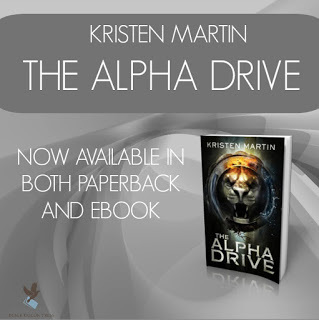
Until next time,

Published on February 20, 2016 11:41
February 9, 2016
How To Write a Book | Editing Your Novel
Once you've actually written your first draft, the next step is editing. If you'd like to watch the video where I talk about editing instead of reading through this post, the option to do that is below.
Editing is different from writing. Writing uses the right side of your brain, the creative side, where you discover and create your story, whereas editing uses the left side of your brain, the more logical and sensible side.
I want to share with you some of the tools I use when editing my manuscripts. There are four areas of editing:
1. Checking for mistakes2. Cutting3. Adding4. Refining
First things first, PRINT a copy of your manuscript (MS). This will make things so much easier for you in the long-run. Trust me, because you're going to read through your entire story. If you have a weekend to dedicate to this, I would highly recommend it. That way, you stay in the same mindset and don't get distracted by other things. This will help you focus on the story to ensure there are no plotholes or other mistakes.
As you do your first run-through, look for things that need fixing. Some writers I know will write "FIX" in the margin and circle or underline the area that needs fixing. While this is helpful, I've noticed that once I am through with my first pass and flip back to Chapter 1, I have absolutely no idea WHAT needed fixing.

So, I've taken this one step further and want to share some three-letter codes (for the most part) to help clarify what needs fixing.
AWK = Awkward
This means that you read a sentence or a passage and it just sounds awkward. Maybe it doesn't flow with the rest of the page, or maybe you just need to tweak a word or two. Whatever the case, it sounds awkward and it needs to be fixed.
MORE = Add more
This means that something was underwritten and you didn't explain it well enough. In order to fix it, you'll need to add more details or another passage or even another chapter to ensure that your reader will understand what you were originally going for. I'll use a separate notebook and number these "MORE"s and write any ideas I have for exactly what more I should add. This way, I can cross-reference with my manuscript and notebook without marking the MS up too much.
NO! = Delete, rewrite, or replace
These are passages where, at the time you're writing them seem great, but in reality, they really don't add any value to the story. If it doesn't add value or tension to the overarching plot, or even a subplot, delete it! Or rewrite/replace it with something that does add value.

CLOSE = Almost there, but not quite
These are passages that are really close to what you were trying to say, but don't quite encompass the whole picture. You won't necessarily cut these scenes, but this code lets you know that it can definitely be improved.
CIRCLE = Circle words to come back to
Sometimes you use a word that just doesn't jive with the sentence or passage. You'd be surprised at how much difference a single word can make. So circle these and come back to them later.
MOVE = Rearrange/move scenes
I use this code A LOT. There are times when you'll have a scene and realize that maybe it should actually be later in your novel or vice versa. I will also number these scenes/passages/chapters in a separate notebook to remind myself where exactly I wanted to move it to.
CHECK FACT = Research facts and make sure they are correct
Sometimes, when you're on a writing roll, you may put in a "filler fact" for something that you haven't gotten around to researching yet. For example, in The Alpha Drive, I needed to know how tall the tallest building in the world was because Seventh Sanctum Headquarters needed to be taller than that. I try to research facts right then and there so that I don't have any questionable facts in my MS, but sometimes, these need further researching and you'd rather write than stop and pull up Google.
CHECK BACK = Is everything consistent?
You want to make sure everything in your story is consistent. Along the way, you may have a few name changes for characters, or you may change your protagonist's hometown. These changes are absolutely fine, as long as you make sure you're consistent.

Do you have any other codes you use while editing your MS? Feel free to share them in the comments below.

Until next time,

Editing is different from writing. Writing uses the right side of your brain, the creative side, where you discover and create your story, whereas editing uses the left side of your brain, the more logical and sensible side.
I want to share with you some of the tools I use when editing my manuscripts. There are four areas of editing:
1. Checking for mistakes2. Cutting3. Adding4. Refining
First things first, PRINT a copy of your manuscript (MS). This will make things so much easier for you in the long-run. Trust me, because you're going to read through your entire story. If you have a weekend to dedicate to this, I would highly recommend it. That way, you stay in the same mindset and don't get distracted by other things. This will help you focus on the story to ensure there are no plotholes or other mistakes.
As you do your first run-through, look for things that need fixing. Some writers I know will write "FIX" in the margin and circle or underline the area that needs fixing. While this is helpful, I've noticed that once I am through with my first pass and flip back to Chapter 1, I have absolutely no idea WHAT needed fixing.

So, I've taken this one step further and want to share some three-letter codes (for the most part) to help clarify what needs fixing.
AWK = Awkward
This means that you read a sentence or a passage and it just sounds awkward. Maybe it doesn't flow with the rest of the page, or maybe you just need to tweak a word or two. Whatever the case, it sounds awkward and it needs to be fixed.
MORE = Add more
This means that something was underwritten and you didn't explain it well enough. In order to fix it, you'll need to add more details or another passage or even another chapter to ensure that your reader will understand what you were originally going for. I'll use a separate notebook and number these "MORE"s and write any ideas I have for exactly what more I should add. This way, I can cross-reference with my manuscript and notebook without marking the MS up too much.
NO! = Delete, rewrite, or replace
These are passages where, at the time you're writing them seem great, but in reality, they really don't add any value to the story. If it doesn't add value or tension to the overarching plot, or even a subplot, delete it! Or rewrite/replace it with something that does add value.

CLOSE = Almost there, but not quite
These are passages that are really close to what you were trying to say, but don't quite encompass the whole picture. You won't necessarily cut these scenes, but this code lets you know that it can definitely be improved.
CIRCLE = Circle words to come back to
Sometimes you use a word that just doesn't jive with the sentence or passage. You'd be surprised at how much difference a single word can make. So circle these and come back to them later.
MOVE = Rearrange/move scenes
I use this code A LOT. There are times when you'll have a scene and realize that maybe it should actually be later in your novel or vice versa. I will also number these scenes/passages/chapters in a separate notebook to remind myself where exactly I wanted to move it to.
CHECK FACT = Research facts and make sure they are correct
Sometimes, when you're on a writing roll, you may put in a "filler fact" for something that you haven't gotten around to researching yet. For example, in The Alpha Drive, I needed to know how tall the tallest building in the world was because Seventh Sanctum Headquarters needed to be taller than that. I try to research facts right then and there so that I don't have any questionable facts in my MS, but sometimes, these need further researching and you'd rather write than stop and pull up Google.
CHECK BACK = Is everything consistent?
You want to make sure everything in your story is consistent. Along the way, you may have a few name changes for characters, or you may change your protagonist's hometown. These changes are absolutely fine, as long as you make sure you're consistent.

Do you have any other codes you use while editing your MS? Feel free to share them in the comments below.

Until next time,

Published on February 09, 2016 06:24
January 20, 2016
Winner of Goodreads Giveaway (#3)
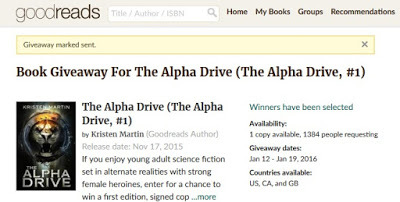
And the winner of the Goodreads Giveaway for one autographed, first edition of The Alpha Drive is...
(drumroll please)
Renae DeLucia!
Congratulations! Your book is already in the mail and on its way to you. Enjoy!
Stay tuned for more Goodreads giveaways which will be posted here on the blog, on my YouTube channel, and on Twitter.
Happy reading!
Published on January 20, 2016 13:24
January 12, 2016
Goodreads Giveaway #3
HAPPY NEW YEAR!
In order to kick off the New Year right, I thought I'd do another giveaway for a signed, first edition copy of my debut novel, THE ALPHA DRIVE. The giveaway is hosted by Goodreads and will run from Tuesday, January 12, 2016 through Tuesday, January 19, 2016. Click below to enter to win!
.goodreadsGiveawayWidget { color: #555; font-family: georgia, serif; font-weight: normal; text-align: left; font-size: 14px;
font-style: normal; background: white; }
.goodreadsGiveawayWidget p { margin: 0 0 .5em !important; padding: 0; }
.goodreadsGiveawayWidgetEnterLink {
display: inline-block;
color: #181818;
background-color: #F6F6EE;
border: 1px solid #9D8A78;
border-radius: 3px;
font-family: "Helvetica Neue", Helvetica, Arial, sans-serif;
font-weight: bold;
text-decoration: none;
outline: none;
font-size: 13px;
padding: 8px 12px;
}
.goodreadsGiveawayWidgetEnterLink:hover {
color: #181818;
background-color: #F7F2ED;
border: 1px solid #AFAFAF;
text-decoration: none;
}
Goodreads Book Giveaway

The Alpha Drive
by Kristen Martin
Giveaway ends January 19, 2016.
See the giveaway details
at Goodreads.
Enter Giveaway
In order to kick off the New Year right, I thought I'd do another giveaway for a signed, first edition copy of my debut novel, THE ALPHA DRIVE. The giveaway is hosted by Goodreads and will run from Tuesday, January 12, 2016 through Tuesday, January 19, 2016. Click below to enter to win!
.goodreadsGiveawayWidget { color: #555; font-family: georgia, serif; font-weight: normal; text-align: left; font-size: 14px;
font-style: normal; background: white; }
.goodreadsGiveawayWidget p { margin: 0 0 .5em !important; padding: 0; }
.goodreadsGiveawayWidgetEnterLink {
display: inline-block;
color: #181818;
background-color: #F6F6EE;
border: 1px solid #9D8A78;
border-radius: 3px;
font-family: "Helvetica Neue", Helvetica, Arial, sans-serif;
font-weight: bold;
text-decoration: none;
outline: none;
font-size: 13px;
padding: 8px 12px;
}
.goodreadsGiveawayWidgetEnterLink:hover {
color: #181818;
background-color: #F7F2ED;
border: 1px solid #AFAFAF;
text-decoration: none;
}
Goodreads Book Giveaway

The Alpha Drive
by Kristen Martin
Giveaway ends January 19, 2016.
See the giveaway details
at Goodreads.
Enter Giveaway
Published on January 12, 2016 11:56
January 5, 2016
How to Write a Book | A Quickstart Guide
It's no secret: Writing a book is hard. Do you want to write a book, but don't know how? Having trouble figuring out where to even begin? Today, we’ll discuss a quick and dirty guide (in 9 steps) to start the writing process and get those gears turning.
If you'd rather watch the video than read through this post, feel free to click play below.
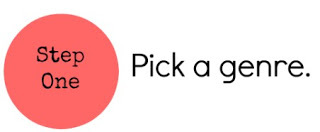
Picking a genre is the first step in writing a book. Don’t base this choice on what genres sell best, but instead, what you like to read. A hard-core fantasy fan writing a contemporary novel is only going to produce a shoddy book – if you even finish writing it at all.
Are you unsure as to what genres you actually like? Look at your bookshelf and take a quick inventory. If one or two genres outweigh the others, then you can assume that that is the genre you’re into. The main point here is to write for yourself, not the market.
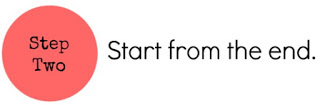 For many writers, endings are the hardest part of any story. Most newbies start out strong but find themselves struggling by the time the ending draws near. So, before you put a single word to paper, take the time to figure out how your story will end. Not how it begins – that can be redrawn and revised indefinitely – but how it closes. Work your way backwards by asking questions like: How does the protagonist reach his/her ultimate fate? What are the catalysts that lead to the close? What was their origin? Your plots will sound much more plausible and you’ll avoid the dreaded cliché endings that plague so much fiction out there.
For many writers, endings are the hardest part of any story. Most newbies start out strong but find themselves struggling by the time the ending draws near. So, before you put a single word to paper, take the time to figure out how your story will end. Not how it begins – that can be redrawn and revised indefinitely – but how it closes. Work your way backwards by asking questions like: How does the protagonist reach his/her ultimate fate? What are the catalysts that lead to the close? What was their origin? Your plots will sound much more plausible and you’ll avoid the dreaded cliché endings that plague so much fiction out there.
Characters are the soul of good writing. Harry Potter, Katniss Everdeen, Jay Gatsby… While the plots in these stories are exceptional, the characters are even more exceptional. Characters stay with readers for generations, whereas sadly, plots can be easily forgotten.
Before you start writing the book, complete the following character exercises:Write a character biography: When was the character born? What is her name? Was she rich, poor, or middle-class? What childhood experiences have stuck with her? What does she like to do in her free time? Answering questions like these will help draw a deep portrait of the character and make her more convincing to your reader.
Next, you need to understand the character’s motivations: What does your character want? What is their ultimate goal? What are her motivations for doing what she does?Then, you need to understand the character arc, meaning the character’s development throughout the story. The essential quality of every good character is change. For example, Harry Potter starts off naïve and ends up a strong, determined, brave adult, while Frodo Baggins is a nobody from the Shire who ends up saving Middle Earth.
Lastly, you must understand the struggle: Character A wants B, but C stands in the way. How A manages to overcome B and C is the heart of any story. For example: Harry Potter wants to defeat the Dark Wizard, Lord Voldemort, but the Ministry of Magic and the holcruxes, and the location of Lord Voldemort stand in his way.
So after you’ve created your characters, we move onto Step 4 . . .
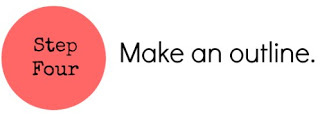
Once you have your characters firmly in place, start creating an outline of the plot. Chiefly, the outline should: give a brief overview of what happens in each chapter, delineate the primary struggle in the novel, show how different events and characters interact and affect each other, all while allowing enough room for improvisation. You don’t have to follow your outline word for word. You can and SHOULD improvise. Just think of it as a rough guideline to hold your plot in place.

The first draft is where you discover the story by yourself. As you write, you’ll find characters and plots growing in directions you’d never thought possible. The outlines you wrote earlier will often be discarded as you experiment with characters, plots, styles and forms. This is a place for you to break the mold and push yourself creatively. Don’t bother being perfect; the faster you can jot down ideas on paper, the better. Eventually, this rough collection of thoughts, ideas, and plotlines will come together into a comprehensible story– after due editing and countless revisions of course. For now, focus on writing – anything.

Take a break and celebrate. You wrote the first draft. This is a huge accomplishment, so take the necessary time to reward yourself for all of your hard work.

This is the part where most writers fail. Slinging out a rough draft is easy enough; turning that incomprehensible mess into something readers would want to read takes time, patience and practice. Ideally, you should give yourself a few months between first draft and first rewrite. This gives you the creative distance necessary to analyze the writing dispassionately. Ask sharp, pertinent questions – does the plot make sense? Are the characters convincing? Is the pace too slow? Too fast? Is the writing crisp and creative enough? Is the story fun to read? The first rewrite should take you considerably longer than the first draft. Don’t worry about getting every word right – you’ll take care of that during editing. For now, focus on pulling the rough ideas in the draft into a narrative that actually makes sense.
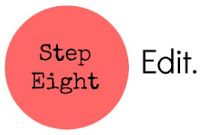
Editing is the opposite of creative writing. Instead of spinning beautiful metaphors and creating lush imagery, you have to actually delete linguistic flourishes. The amazing adverb you found after an hour’s search in the thesaurus? Gone. Those long-winded, poetic asides? Deleted.To make this murder slightly easier, here are some tips:Minimize Adverb Use: Adverbs are the lazy man’s writing crutches. They reduce into a single word what should generally be conveyed by context. “He walked quickly to the door as Lily pulled into the garage” is not bad writing, it’s lazy writing. Try being more descriptive – “He rushed to the door as soon as he heard Lily’s car pull into the garage”.Use Plenty of Synonyms: This quote from Dead Poet’s Society says it all:
“So avoid using the word ‘very’ because it’s lazy. A man is not very tired, he is exhausted. Don’t use very sad, use morose. Language was invented for one reason, boys – to woo women – and, in that endeavor, laziness will not do. It also won’t do in your essays.”Tighten Up: A book is no place for lazy writing. Take out words and passages that aren’t absolutely crucial to the story. As a guideline, your book should be half its original length after a solid round of editing.Get Outside Help: Most writers don’t have the critical distance to edit their own books properly. Consider getting outside help – a professional editor or a friend, beta readers, or critique partners – to look over your manuscript.

You’ve written your first draft, you’ve rewritten that draft, you’ve edited the crap out of it, and now you have a book . So go celebrate! It’s not every day that you write a book, so soak in the feeling of accomplishment and success because reality will hit you all too soon when you realize you have to sit down and do it all over again for the second book. So ENJOY YOURSELF and give yourself enough time away from the computer so that sitting down again is something you look forward to and actually WANT to do. Going back too soon could make it feel like a chore, and you don’t want that!
[source]

Until next time,

Published on January 05, 2016 06:14
December 1, 2015
Goodreads Giveaway (#2)
Hello fellow booklovers,
In my latest video, I announced that Goodreads is hosting another giveaway for one first edition, autographed copy of THE ALPHA DRIVE. The giveaway will run from Tuesday, December 1st-Tuesday, December 8th until midnight. You can enter to win by clicking on the link below:
.goodreadsGiveawayWidget { color: #555; font-family: georgia, serif; font-weight: normal; text-align: left; font-size: 14px; font-style: normal; background: white; } .goodreadsGiveawayWidget p { margin: 0 0 .5em !important; padding: 0; } .goodreadsGiveawayWidgetEnterLink { display: inline-block; color: #181818; background-color: #F6F6EE; border: 1px solid #9D8A78; border-radius: 3px; font-family: "Helvetica Neue", Helvetica, Arial, sans-serif; font-weight: bold; text-decoration: none; outline: none; font-size: 13px; padding: 8px 12px; } .goodreadsGiveawayWidgetEnterLink:hover { color: #181818; background-color: #F7F2ED; border: 1px solid #AFAFAF; text-decoration: none; }
Goodreads Book Giveaway

The Alpha Drive
by Kristen Martin
Giveaway ends December 08, 2015.
See the giveaway details
at Goodreads.
Enter Giveaway
In my latest video, I announced that Goodreads is hosting another giveaway for one first edition, autographed copy of THE ALPHA DRIVE. The giveaway will run from Tuesday, December 1st-Tuesday, December 8th until midnight. You can enter to win by clicking on the link below:
.goodreadsGiveawayWidget { color: #555; font-family: georgia, serif; font-weight: normal; text-align: left; font-size: 14px; font-style: normal; background: white; } .goodreadsGiveawayWidget p { margin: 0 0 .5em !important; padding: 0; } .goodreadsGiveawayWidgetEnterLink { display: inline-block; color: #181818; background-color: #F6F6EE; border: 1px solid #9D8A78; border-radius: 3px; font-family: "Helvetica Neue", Helvetica, Arial, sans-serif; font-weight: bold; text-decoration: none; outline: none; font-size: 13px; padding: 8px 12px; } .goodreadsGiveawayWidgetEnterLink:hover { color: #181818; background-color: #F7F2ED; border: 1px solid #AFAFAF; text-decoration: none; }
Goodreads Book Giveaway

The Alpha Drive
by Kristen Martin
Giveaway ends December 08, 2015.
See the giveaway details
at Goodreads.
Enter Giveaway
Published on December 01, 2015 07:33
November 18, 2015
The Alpha Drive Release Day!
November 17, 2015
Today is a very exciting day because it's the release day for my debut novel, The Alpha Drive! It's available right now for purchase on Amazon in both paperback and ebook. Check it out!
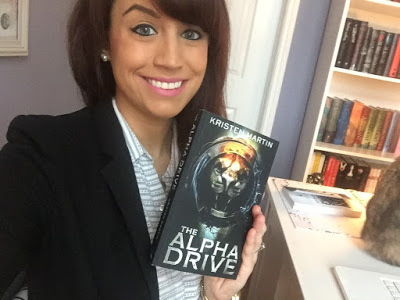
There will be another Goodreads Giveaway for one first edition, autographed copy of The Alpha Drive in early December, so stay tuned for that. The first giveaway had over 1,000 people enter to win and I just wanted to say that the support and excitement for my first book has been so overwhelming that I was actually crying happy tears last night, so THANK YOU. I'm humbled, blessed, and honored, all rolled up in a teeny, tiny ball.
It's been a long, but fun (and sometimes stressful) journey to reaching publication. I'm so excited to start this next chapter of my life as a published author and I plan to write many, MANY more books in the future. Cheers!
Today is a very exciting day because it's the release day for my debut novel, The Alpha Drive! It's available right now for purchase on Amazon in both paperback and ebook. Check it out!

There will be another Goodreads Giveaway for one first edition, autographed copy of The Alpha Drive in early December, so stay tuned for that. The first giveaway had over 1,000 people enter to win and I just wanted to say that the support and excitement for my first book has been so overwhelming that I was actually crying happy tears last night, so THANK YOU. I'm humbled, blessed, and honored, all rolled up in a teeny, tiny ball.
It's been a long, but fun (and sometimes stressful) journey to reaching publication. I'm so excited to start this next chapter of my life as a published author and I plan to write many, MANY more books in the future. Cheers!
Published on November 18, 2015 08:25

